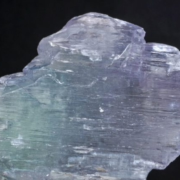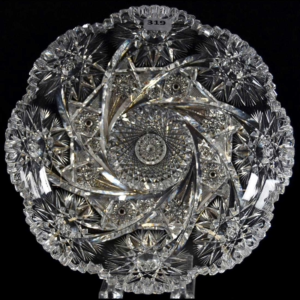Spodumene: Properties, Uses and Virtues
- Geological formation of Spodumene
- Rough Spodumene – Raw Beauty Revealed
- Sources – The Global Scope of Spodumene
- Historical Significance of Spodumene – Through the Ages
- Metaphysical properties of Spodumene – Illuminating energies
- Varieties of Spodumene
- Spodumene colors
- Durability and Wearability of Spodumene
- Spodumene improvements – Preserving natural beauty
- Synthetic Spodumene – Nature in the Laboratory
- Imitations of the Spodumene – Discerning the Authentic
- Spodumene care – Preserving natural beauty
Geological formation of Spodumene
Spodumene, a mineral formed by complex geological processes, emerges from metamorphic rocks, particularly lithium-rich pegmatites, as a result of extreme pressure and temperature conditions. This fascinating formative journey lays the foundations for Spodumene’s distinct beauty and its presence in the Earth’s crust.
Rough Spodumene – Raw Beauty Revealed
The appeal of uncut Spodumene crystals reveals nature’s complex art, highlighted by their distinct monoclinic structures. The crystals are often thick with striations running parallel to their length. These characteristics offer a glimpse of the hidden beauty that lies within Spodumene, making it a gemologist’s delight and a true masterpiece of earthly creation.
Sources – The Global Scope of Spodumene
Spodumene is found in many parts of the world, including Brazil, Myanmar, Madagascar and the United States. These diverse sources contribute to Spodumene’s range of colours, making it a highly sought-after gem among collectors and jewellers.
Historical Significance of Spodumene – Through the Ages
Spodumene, while perhaps not as widely known as some other gems, has a fascinating historical significance that has marked different cultures over time. From its discovery to its use in prestigious collections, let’s explore some of the historical facts that shed light on Spodumene’s rich history.
Ancient Origins in Brazil:
The story of Spodumene begins at the end of the 18th century, when it was first discovered in the Minas Gerais region of Brazil. The gem’s initial identification sparked curiosity due to its striking green hues and unique crystal formations.
George Frederick Kunz and Kunzite:
In the early 20th century, gemologist and mineralogist George Frederick Kunz played a key role in popularising Spodumene. He recognised the potential of the pink Spodumene variety and named it “Kunzite” in his honour. This significant name not only drew attention to the gem, but also contributed to its place in history.
The Hiddenite link:
In 1879, Spodumene gained further recognition when a new variety of gem was discovered in Hiddenite, North Carolina. This new variety, now known as “Hiddenite”, had a distinctive vibrant green colour. It was named after William Earl Hidden, the mineralogist who unearthed the gem. The discovery of Hiddenite sparked excitement and established Spodumene as a unique and sought-after gem.
Royal Treasures and Jewellery Collections:
Over the years, Spodumene has won the favour of royalty and collectors alike. In particular, Empress Dowager Cixi of China was known to have a collection of finely sculpted Spodumene objects. The gem’s enchanting colours and exquisite craftsmanship have found their way into the jewellery collections of the elite, illustrating its esteemed status in the gem world.
Metaphysical properties of Spodumene – Illuminating energies
In metaphysical beliefs, Spodumene is associated with the promotion of inner peace, emotional healing and serenity. It is believed to calm the mind, relieve stress and enhance mindfulness, making it a valuable companion for those seeking emotional balance.
Its popularity boomed during the New Age movement of the 1980s, when gem enthusiasts and healers believed in its ability to soothe the heart and promote love.
Varieties of Spodumene
Spodumene encompasses a range of captivating varieties, of which Kunzite and Hiddenite are the best known. These varieties come in distinct colours and retain their charm within the Spodumene family.
Spodumene colors
Spodumene can be shades of white, yellow, pink, violet and green.
Kunzite: Kunzite is the pink to violet variety of Spodumene.
Hiddenite: Hiddenite is a rare green variation of Spodumene, caused by chromium.
Durability and Wearability of Spodumene
With a hardness of 6.5 to 7 on the Mohs scale, Spodumene offers a balance between durability and beauty. The resilience of this gem means it can withstand the demands of everyday wear, preserving its enduring charm for generations to come, although it is best worn in protective settings.
Spodumene improvements – Preserving natural beauty
Colourless Spodumene can be irradiated to create pink hues and become Kunzite. Pink Spodumene can be irradiated to create green hues. However, this treatment is rare and must always be disclosed, as the colour is not stable and fades in the light.
Synthetic Spodumene – Nature in the Laboratory
Spodumene has been synthesized for scientific purposes, but I haven’t found any evidence of its use in the jewelry and collectibles markets.
Imitations of the Spodumene – Discerning the Authentic
As with any valuable gem, imitations of Spodumene can be found. Buyers should be particularly careful with Fluorite, Emerald, Tourmaline and Topaz.
To guarantee authenticity, it is essential to buy from reputable sources and obtain certification for collectors and jewellery enthusiasts.
Spodumene care – Preserving natural beauty
Caring for Spodumene jewellery ensures that its captivating appeal remains radiant over time.
Avoid exposure to aggressive chemicals and store the gem away from direct sunlight.
Gently clean Spodumene jewellery with mild soapy water and a soft brush to preserve its radiant timelessness.
Avoid mechanical cleaning, shocks or open flames.


